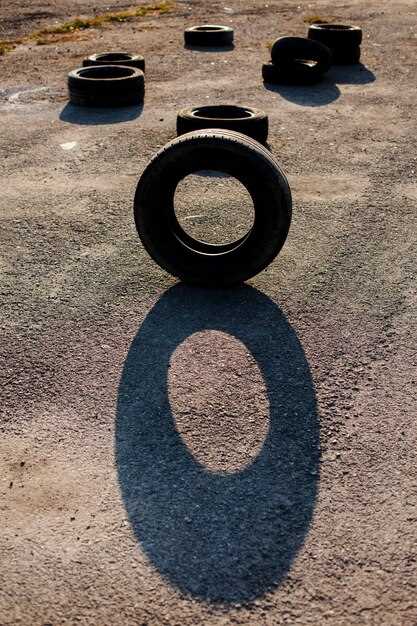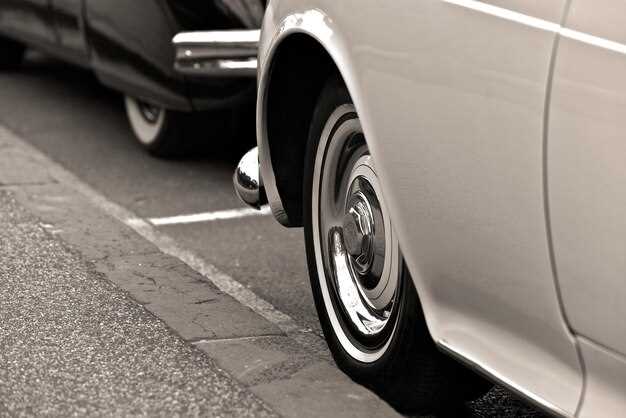
When it comes to classic cars, maintaining their safety and performance is crucial, and one of the most often overlooked aspects is tire safety. Tires are not only the only contact between the vehicle and the road, but they also play a significant role in the overall driving experience. Understanding the age and tread of these tires can make all the difference between a safe ride and a potentially dangerous situation.
The age of a tire is a critical factor that many classic car owners may unintentionally neglect. Tires have a limited lifespan, regardless of the tread depth. Even if a tire appears to have sufficient tread, its materials can degrade over time. Most manufacturers recommend replacing tires that are more than six years old, while others suggest replacement after ten years, irrespective of their condition. When it comes to classic cars, where originality is valued, it’s vital to strike a balance between aesthetic preservation and safety.
Tire tread is equally important and acts as a key indicator of performance. Adequate tread depth ensures proper traction, especially when driving in adverse weather conditions. For classic car enthusiasts, monitoring tread wear is essential to ensure that your prized vehicle remains roadworthy. Regular inspection of both the age and tread of tires should be an integral part of any classic car maintenance regimen to safeguard the vehicle and its occupants.
Tire Safety for Classic Cars: Age and Tread Explained
Ensuring the safety of classic cars involves understanding the critical factors of tire age and tread condition. Tires undergo natural degradation over time, regardless of the mileage covered. For classic vehicles, which may not be driven frequently, it’s essential to be aware of how age affects tire performance and safety.
The general guideline is that tires should be replaced every six to ten years, even if they appear to be in good condition. Over time, the rubber compounds in tires can deteriorate due to exposure to elements such as UV light, ozone, and temperature fluctuations. This aging process can lead to reduced flexibility, cracking, and ultimately, tire failure.
Tread depth is equally important for driving safety. Tires are designed with specific tread patterns to provide traction, and diminished tread depth can severely compromise handling and stopping distances. A minimum tread depth of 2/32 of an inch is often recommended for safe driving conditions, but for classic cars, maintaining deeper tread can enhance performance, especially in wet conditions.
Regular inspections of both tire age and tread are vital for classic car owners. Check for cracks, bulges, or other signs of aging, and measure tread depth using a gauge or the penny test. By taking these precautions, classic car enthusiasts can ensure optimal safety and performance while enjoying their vintage vehicles.
Understanding the Impact of Tire Age on Performance and Safety
Tire age significantly affects both performance and safety, particularly for classic cars. Tire materials degrade over time due to environmental factors such as UV exposure, temperature fluctuations, and humidity. Even if a tire appears to have sufficient tread depth, its age can compromise its integrity, leading to potential failure while driving.
Manufacturers typically recommend replacing tires every six to ten years, regardless of tread wear. This recommendation stems from research that indicates rubber compounds lose elasticity and strength as they age. A tire’s ability to grip the road diminishes due to this degradation, adversely affecting handling and braking distances.
Old tires are also more susceptible to blowouts and punctures. The internal structure of an aging tire can be weakened, making it more prone to catastrophic failure. Classic car owners should regularly check the age of their tires, which is indicated by the DOT code on the tire sidewall. The last four digits of this code reveal the week and year of manufacture.
Investing in new tires not only enhances the overall performance of classic cars but also ensures safety on the road. Drivers of vintage vehicles should prioritize tire assessments during maintenance checks to mitigate risks associated with aged tires.
Assessing Tread Depth: How to Determine When to Replace Tires

Understanding the tread depth of your tires is crucial for maintaining safety while driving your classic car. Worn tires can lead to blowouts, reduced traction, and compromised handling. Here’s how to assess tread depth and determine when it’s time for a replacement.
To evaluate your tire tread depth:
- Use the Penny Test: Insert a penny into the tread grooves with Lincoln’s head facing down. If you can see the top of Lincoln’s head, your tread is too worn, and it’s time to replace the tire.
- Utilize a Tread Depth Gauge: This tool provides an exact measurement of tread depth in 32nds of an inch. New tires typically have 10/32″ to 12/32″ of tread depth. Replace tires when the depth falls below 2/32″.
- Look for Wear Indicators: Many tires have built-in wear bars. When the tread is level with these bars, it’s an indication to replace the tire.
Regularly check the tread depth, especially on classic cars, which may not have tire technology as advanced as modern vehicles. Pay attention to the following signs that indicate a need for tire replacement:
- Uneven wear patterns suggest misalignment or suspension issues, necessitating a tire check.
- Cracks, bulges, or blisters on the sidewalls can lead to blowouts, indicating that the tire should be replaced.
- Excessive vibrations while driving may signal a tire issue that requires evaluation.
Regular tire maintenance and tread depth assessment are key to ensuring a safe driving experience. Replacing tires promptly can prevent dangerous blowouts and ensure that your classic car remains roadworthy.
Recognizing Signs of Tire Blowouts and Preventive Measures

Tire blowouts can pose serious risks, especially for classic cars that may have aging tires. Recognizing the early signs of a potential blowout is crucial for maintaining safety on the road. One of the primary indicators is the age of the tires. Tires older than six years, regardless of tread depth, should be inspected regularly or replaced. Additionally, visual signs such as cracks, bulges, or uneven wear on the tire surface can signal impending failure.
Another critical factor is tire pressure. Under-inflation or over-inflation can lead to heat buildup and increase the likelihood of a blowout. Regularly checking and maintaining the recommended tire pressure is a vital preventive measure. Furthermore, it’s essential to monitor tread depth; tires with insufficient tread may not perform adequately, especially in wet conditions, increasing the risk of failure.
Road conditions also play a significant role in tire durability. Sharp objects, potholes, or debris can damage tires, making it important to be observant when driving. If a vibration or loud noise occurs while driving, these could be signs of a developing issue. Regularly servicing your classic car and replacing tires that show any of these warning signs will help ensure safety and reliability.












